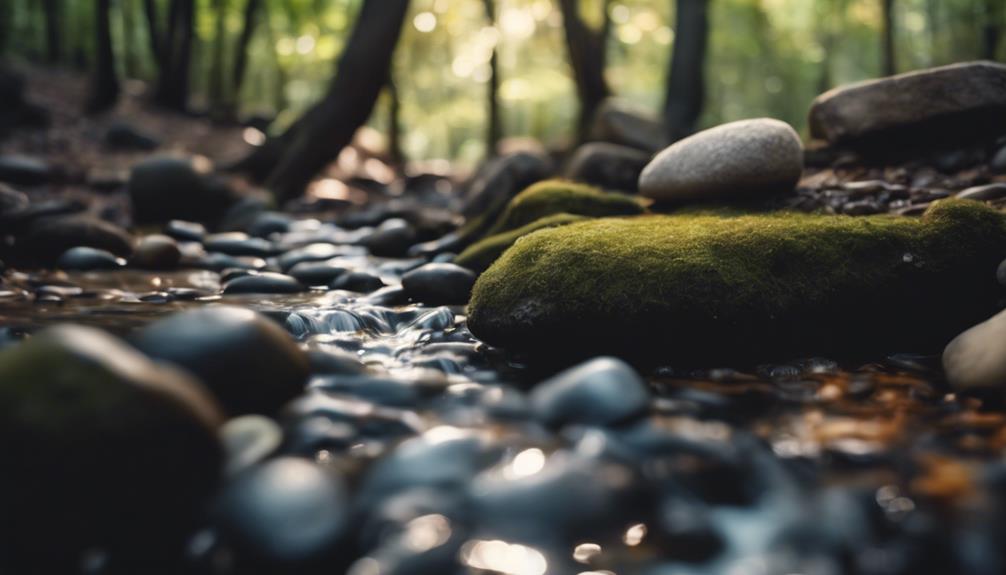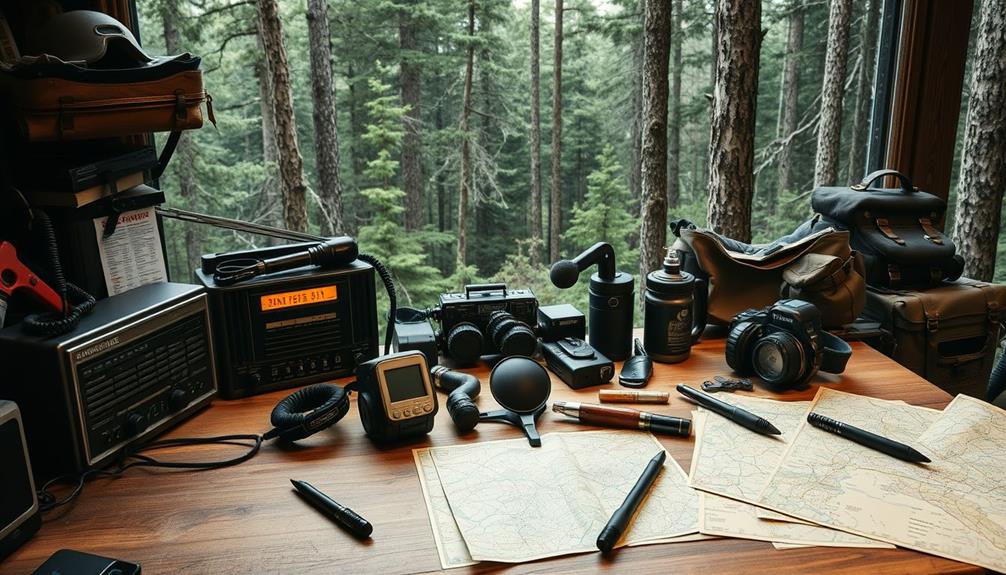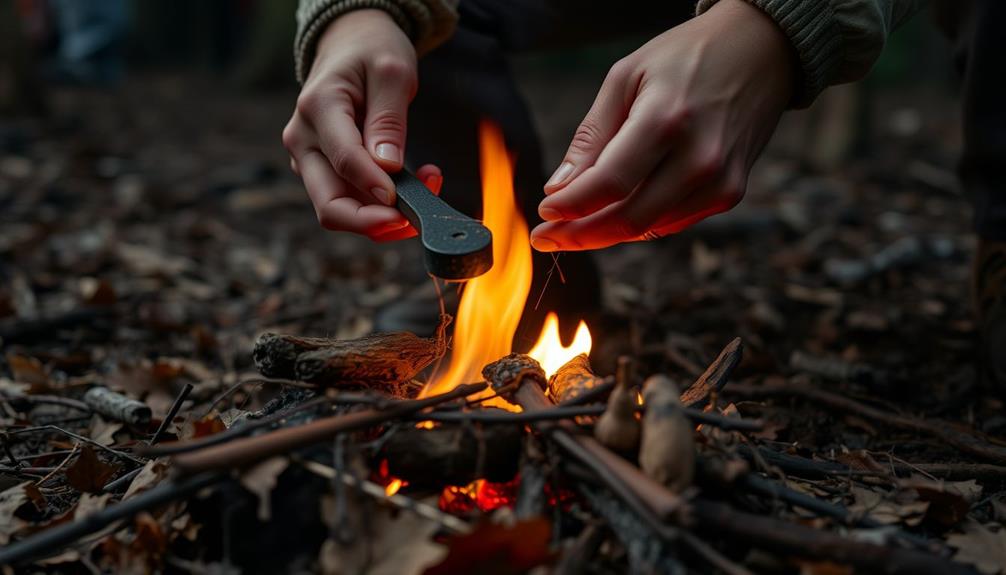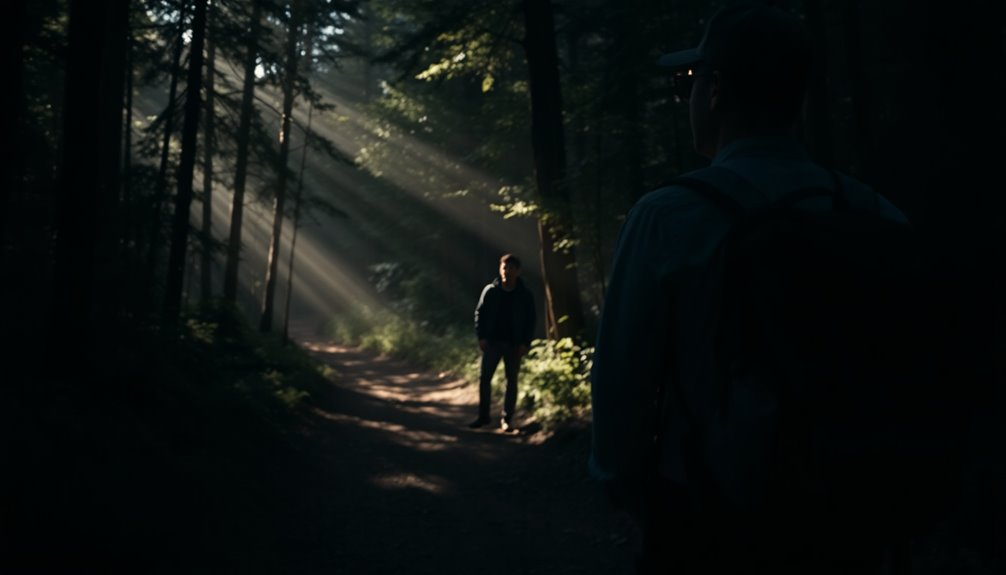In a crisis, purifying water is essential for your safety. Start by boiling it for at least one minute; this kills harmful pathogens. If the water is cloudy, filter it first using clean cloth or improvised materials like sand or charcoal. You can also use unscented chlorine bleach—just add two drops per liter, wait 30 minutes, and it's ready. Iodine tablets are another effective option. Finally, consider portable filters for added safety. By following these steps, you can guarantee your water is safe to drink. For more tips and methods, there are plenty of practical solutions available.
Key Takeaways
- Boil water for at least 1 minute at sea level or 3 minutes above 6,500 feet to eliminate harmful pathogens.
- Use unscented chlorine bleach or iodine tablets for chemical disinfection; follow proper dosage instructions for safety.
- Portable filters can effectively remove bacteria and parasites; test filter effectiveness regularly for varying contaminants.
- Practice solar disinfection by placing clear water in plastic bottles and exposing them to direct sunlight for several hours.
Understanding Water Contamination
Water contamination can happen unexpectedly, often due to natural disasters or infrastructure failures, putting your health at risk. When events like floods occur or water mains break, harmful pathogens can infiltrate your water supply. You mightn't realize that common microorganisms, such as bacteria and protozoa, can lead to severe health issues, including waterborne diseases like cholera and dysentery.
Over 2 billion people globally lack access to safe drinking water, revealing the extensive nature of this problem. You should be vigilant for indicators of water contamination, such as turbidity, sediment, or unusual odors and tastes, as these suggest potential pollution.
To protect yourself, consider investing in water testing kits that can help you assess the safety of your water. Identifying contaminants before consumption is vital. If contamination is detected, purifying your water becomes essential to avoid serious health risks.
Understanding the sources and signs of water contamination empowers you to take action, ensuring your access to safe drinking water. Don't wait until it's too late; being proactive can safeguard you and your loved ones from harmful pathogens lurking in your water supply.
Importance of Safe Drinking Water

Safe drinking water is essential for your health and survival, especially during a crisis.
Contaminated water can expose you to dangerous diseases, while access to clean sources can greatly reduce health risks and overall healthcare costs.
Understanding these factors can help you prioritize safe water in emergency situations.
Health Risks of Contaminated Water
Contaminated drinking sources pose severe health risks, leading to millions of deaths each year from waterborne diseases. When you consume unsafe water, you're putting yourself at risk for illnesses like cholera and dysentery, which account for 3.4 million deaths annually. The World Health Organization highlights that around 2 billion people lack access to safe drinking water, raising their chances of illness considerably.
The health risks associated with contaminated water don't just stop at immediate illness. Long-term complications can arise, including gastrointestinal infections that may plague you for years. This issue becomes even more critical when considering children under five, who are particularly vulnerable. Unsafe water can cause malnutrition and worsen existing health challenges in this age group, making it essential to prioritize safe drinking water.
To protect yourself and your loved ones, always seek out clean water sources, especially in times of crisis. Understanding the dangers of contaminated water is the first step in safeguarding your health and well-being. Make sure you have a plan in place to purify water, as it could be a life-saving measure.
Accessing Safe Water Sources
Accessing safe drinking water becomes essential in emergencies, especially when traditional sources are compromised by disasters or contamination. Contaminated water can expose you to dangerous waterborne diseases like cholera and dysentery, which can be life-threatening. In fact, the World Health Organization reports that 2 billion people lack access to safe drinking water, highlighting a critical global health issue.
When faced with questionable water sources, it's important to follow local health department guidelines. They can provide valuable information on whether your tap water is safe or if you need to use alternative options. If you suspect contamination, it's wise to boil your water before using it for drinking or cooking. Boiling effectively kills pathogens, making it a reliable method for ensuring your water is safe.
Additionally, consider utilizing bottled or chemically treated water as temporary solutions.
Economic Impact of Unsafe Water
Unsafe drinking water poses a staggering economic burden, costing low-income countries around $260 billion annually due to health crises and lost productivity. With about 2 billion people affected globally, unsafe drinking water leads to increased rates of waterborne diseases, which result in an estimated 3.4 million deaths each year. This crisis not only strains healthcare systems but also profoundly impacts economic growth.
When communities lack access to safe drinking water, the economic cost escalates. Poor health outcomes reduce workforce productivity, as individuals miss work due to illness or caring for sick family members. Conversely, investing in safe drinking water infrastructure can yield impressive returns, with every dollar spent generating about $4.30 in economic benefits through improved health and productivity.
Ensuring water safety is vital for sustainable development. By prioritizing access to safe drinking water, you not only help prevent waterborne diseases but also foster healthier communities that can thrive economically.
Boiling Water for Purification

When you boil water for purification, it's essential to follow specific boiling time guidelines to effectively kill pathogens.
After boiling, let the water cool before storing it in clean, sanitized containers to keep it safe.
Boiling Time Guidelines
To effectively kill harmful pathogens in water, boil it for at least 1 minute at sea level, increasing to 3 minutes if you're at elevations above 6,500 feet. This boiling time is essential because it helps guarantee that you eliminate harmful microorganisms that may be present, making the water safe for consumption.
If you're dealing with cloudy water, it's best to filter it through a cloth or coffee filter before you boil. Removing sediment not only improves the boiling process but also enhances the purification methods you're using, allowing for cleaner water in the end.
Pay attention to your boiling time. While 1 minute is the minimum at sea level, extending it to 3 minutes at higher altitudes guarantees all pathogens are effectively killed.
Remember, boiling water won't remove chemical contaminants, such as heavy metals, so if you suspect the water is contaminated with chemicals, consider other purification methods.
After boiling, store your clean water in sanitized containers with tight covers, and label it with the date of purification for safety. This way, you'll know the water is fresh and ready for use.
Cooling and Storage Tips
Allow your boiled water to cool for at least 30 minutes before drinking to guarantee it's safe and pleasant to consume. After boiling water for purification, proper cooling and storage are essential.
Use clean, sanitized containers with tight-fitting lids to keep your water free from contamination. Opt for glass or BPA-free plastic, as they won't leach harmful chemicals into your stored water.
If your boiled water is cloudy or has sediment, be certain to filter it again before storage. This step enhances clarity and makes certain you're drinking high-quality water.
Once your water has cooled, pour it into the sanitized containers and label them with the date of boiling. This helps you track freshness and reminds you to use it within a few days for maximum safety.
Keep your filtered water in a cool, dark place to maintain its quality. Remember, proper storage is just as important as the boiling process.
Chemical Disinfection Methods

Chemical disinfection methods, like using unscented chlorine bleach or iodine tablets, offer effective ways to purify water during a crisis. To guarantee safe drinking water, follow the recommended dosages and procedures. For unscented chlorine bleach, add 2 drops (0.1 ml) per liter of water with a concentration of 5%-9% sodium hypochlorite. Let it sit for at least 30 minutes before consuming. Iodine tablets can also be used, but their dosage varies based on the contamination level.
Keep in mind that chemical disinfectants are effective against most viruses, bacteria, and protozoa. However, they might not eliminate resistant parasites, so additional methods may be necessary.
If you're dealing with cloudy water, filter it first to remove visible particles. Turbidity can greatly reduce the effectiveness of disinfection. Here's a quick comparison of disinfection methods:
| Method | Effectiveness |
|---|---|
| Unscented Chlorine Bleach | Most viruses and bacteria |
| Iodine Tablets | Varies by contamination level |
| Chemical Purification Tablets | Manufacturer's instructions required |
Using Bleach for Safety

Using unscented bleach properly can affirm your water is safe to drink during a crisis. Bleach, containing 5-9% sodium hypochlorite, effectively disinfects water by killing harmful microorganisms.
To purify clear water, add 2 drops (0.1 ml) of bleach per liter. If the water is cloudy, increase the dosage to 4 drops (0.2 ml) per liter. This affirms the water is safe for drinking.
After adding the bleach, stir the water thoroughly and let it sit for at least 30 minutes. This waiting period allows the bleach to work effectively, disinfecting the water and eliminating pathogens.
Always avoid bleach with added scents or dyes, as these can introduce additional contaminants that compromise your water's safety.
After 15 minutes, check for a slight bleach odor. If you can't detect it, repeat the dosage to affirm the water is still safe for drinking.
Filtration Options and Techniques

Portable water filters offer a reliable and efficient way to purify water during a crisis, effectively removing harmful contaminants with ease. These filters are essential for anyone needing safe drinking water when traditional sources are compromised. Here are some options to take into account:
- Portable water filters like the Aquapura straw and Lifesaver 1500UF Bottle are perfect for emergencies, boasting a pore size of ≤1 micron to eliminate bacteria and parasites.
- Home filtration systems such as Berkey filters and biosand filters can remove up to 97% of harmful bacteria, making them a solid long-term solution for guaranteeing safe drinking water at home.
- An improvised filter can be crafted using simple materials like sand, charcoal, and gravel layered in a cone-shaped container. However, this method requires additional purification techniques to fully guarantee safety.
Alternative Purification Methods

Alternative purification methods can provide effective solutions for obtaining safe drinking water when traditional filtration isn't available.
One popular technique is solar disinfection (SODIS), where you fill clear plastic bottles with water and leave them in direct sunlight for at least six hours. This method uses UV rays to reduce germs, but remember, it only works with clear water.
If you're dealing with murky water, try the sedimentation method. Let the water sit undisturbed for several hours, allowing sediments to settle at the bottom. You can then collect the clearer water from the top.
For more immediate results, consider using chemical disinfection tablets. These usually contain iodine or chlorine and can effectively eliminate harmful pathogens when used according to the instructions. Just be cautious—iodine isn't suitable for everyone.
Another effective method is distillation. Boil contaminated water in a pot, capturing the steam with an upside-down lid. The steam will condense into clean water in a separate container, removing impurities like salt and heavy metals.
Lastly, portable water filters can also help, especially those with a pore size of one micron or less, ensuring a safer drinking supply.
Indicators of Water Safety

When evaluating water safety, look for clear signs that indicate its quality, such as clarity, odor, and taste. Start by examining the water's appearance. Clear water typically suggests lower levels of contaminants, while cloudy water indicates potential pollution. If you see sediment or floating particles, it's a red flag that the water may be unsafe and needs additional purification.
Here are some indicators to help you assess water safety:
- Clarity: Clear water is generally safer; cloudy water needs filtering.
- Sediment: Presence of particles signals potential contaminants; avoid consumption.
- Odor: Unpleasant smells can indicate chemical pollution; don't drink until tested.
Planning for Water Emergencies

Understanding the indicators of water safety sets the stage for effective planning during water emergencies, guaranteeing you're prepared to secure clean drinking water when it matters most.
Start by familiarizing yourself with local water sources and their potential contaminants; this knowledge is essential for crisis planning.
Stock your emergency water supply with vital water purification tools like portable filters, purification tablets, and boiling supplies. These items will enhance your chances of survival during a crisis. In addition to these water purification tools, consider adding healing honeysuckle benefits to your emergency kit. Honeysuckle is known for its antibacterial and anti-inflammatory properties, making it a valuable resource for treating minor cuts and wounds. Including healing honeysuckle benefits in your emergency supply can help promote overall wellness and resilience during a crisis.
Additionally, learn multiple water purification methods, such as boiling, chemical disinfection, and filtration, so you can adapt to different situations and resource availability.
Regularly check and update your emergency water supply. Make certain to label stored water with the date and replace it as necessary to maintain safety.
Don't forget to engage with community resources and training programs focused on water safety and purification. This engagement will enhance your preparedness and response capabilities in emergencies.
Conclusion
In a crisis, knowing how to purify water can feel like having a superpower.
You've learned essential methods—boiling, chemical disinfection, and filtration—that can transform contaminated water into a lifesaver.
Always remember to check for indicators of safety before drinking.
By planning ahead, you can tackle any water emergency with confidence.
So, arm yourself with these tricks, and you'll be ready to face any challenge that comes your way!
Safe water means safe living!










